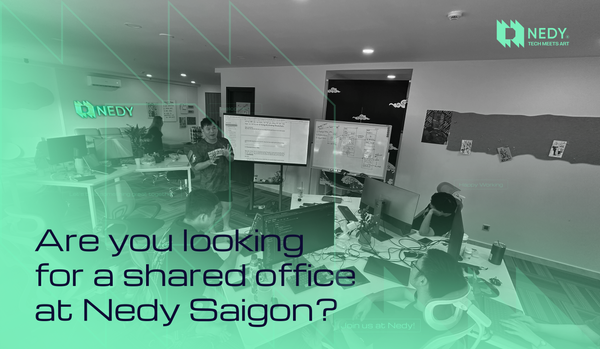Understanding Account Abstraction: The Future of Blockchain Wallets

Blockchain technology is evolving rapidly, and one of the most exciting innovations reshaping how users interact with decentralized networks is Account Abstraction. This concept promises to make blockchain wallets smarter, more secure, and easier to use by transforming the traditional account model. In this post, we’ll explore what Account Abstraction is, why it matters, and provide a simple coding demonstration to help you understand how it works under the hood.
What is Account Abstraction?
Traditionally, blockchain accounts are of two types:
- Externally Owned Accounts (EOAs): Controlled by private keys, these accounts sign transactions directly.
- Contract Accounts: Smart contracts that execute code but cannot initiate transactions on their own.
Account Abstraction blends these concepts by turning user accounts themselves into smart contracts. Instead of a user’s account being controlled solely by a private key, it becomes a programmable smart contract wallet that can enforce custom logic for transaction validation, authorization, and execution.
This abstraction hides the complexity of blockchain operations from users, enabling features like:
- Multi-factor authentication
- Social recovery (recover wallet without seed phrase)
- Gas fee sponsorship (pay fees in tokens other than ETH)
- Batch transactions
- Custom spending limits
By doing so, Account Abstraction creates a more flexible, secure, and user-friendly blockchain experience.
How Does Account Abstraction Work?
The process typically involves several key components:
- UserOperation Creation: Users create a UserOperation object describing the intended transaction, including destination, data, value, nonce, and signature.
- Alt Mempool: Instead of sending a normal transaction, UserOperations are submitted to an alternative mempool designed for these operations.
- Bundlers: Special nodes called bundlers collect multiple UserOperations, bundle them, and submit them as a single transaction to the blockchain.
- Entry Point Contract: This special smart contract verifies and executes each UserOperation according to the wallet’s custom logic.
- Execution: The smart contract wallet processes the transaction, enforcing any programmed rules such as multi-sig approval or gas abstraction.
Why is Account Abstraction Important?
- Enhanced Security: Wallets can require multiple signatures, biometrics, or two-factor authentication.
- Improved UX: Users can recover wallets without seed phrases and pay gas fees in alternative tokens or have third parties sponsor fees.
- Flexibility: Developers can build wallets tailored to specific use cases like shared accounts or automated payments.
- Bridging Web2 and Web3: Simplifies blockchain interactions, making decentralized apps accessible to mainstream users.
Simple Coding Demonstration of Account Abstraction
To bring these ideas to life, here’s a minimal Solidity smart contract wallet illustrating the core concept of Account Abstraction. This contract accepts a UserOperation struct, verifies the signature and nonce, and executes the requested transaction.
// SPDX-License-Identifier: MIT
pragma solidity ^0.8.17;
struct UserOperation {
address to; // target address to call
bytes data; // call data to execute
uint256 value; // ETH value to send
uint256 nonce; // unique nonce to prevent replay
bytes signature; // signature of the operation
}
contract SimpleAccount {
address public owner;
uint256 public nonce;
constructor(address _owner) {
owner = _owner;
nonce = 0;
}
// Verify signature matches the owner and the operation data
function _verify(UserOperation memory op) internal view returns (bool) {
// Hash the operation fields (except signature)
bytes32 hash = keccak256(abi.encodePacked(
op.to,
op.data,
op.value,
op.nonce,
address(this) // include contract address to avoid replay across contracts
));
// Prefix and recover signer
bytes32 messageHash = keccak256(abi.encodePacked("\x19Ethereum Signed Message:\n32", hash));
address signer = recoverSigner(messageHash, op.signature);
return (signer == owner && op.nonce == nonce);
}
// Recover signer from signature
function recoverSigner(bytes32 message, bytes memory sig) internal pure returns (address) {
require(sig.length == 65, "Invalid signature length");
bytes32 r;
bytes32 s;
uint8 v;
assembly {
r := mload(add(sig, 32))
s := mload(add(sig, 64))
v := byte(0, mload(add(sig, 96)))
}
if (v < 27) v += 27;
return ecrecover(message, v, r, s);
}
// Execute the UserOperation if valid
function executeOp(UserOperation calldata op) external payable {
require(_verify(op), "Invalid signature or nonce");
nonce++; // increment nonce to prevent replay
(bool success, ) = op.to.call{value: op.value}(op.data);
require(success, "Call failed");
}
// Allow contract to receive ETH
receive() external payable {}
How This Works
- The SimpleAccount contract is a smart contract wallet owned by a single address.
- It receives a UserOperation containing the transaction details and a signature.
- The _verify function checks that the signature matches the owner and the nonce is correct to prevent replay attacks.
- Upon successful verification, executeOp executes the transaction on behalf of the user.
- The nonce increments to ensure each operation is unique.
- This contract can receive ETH to fund transactions.
How to Use This Example
- Deploy the SimpleAccount contract with your wallet address as the owner.
- Off-chain, construct a UserOperation with the desired transaction details (destination, data, value, nonce).
- Sign a hash of the operation fields with your private key.
- Submit the signed UserOperation to the executeOp function.
- The contract verifies the signature and nonce, then executes the transaction atomically.
Conclusion
Account Abstraction is a groundbreaking step toward making blockchain wallets more programmable, secure, and user-friendly. By shifting transaction validation and execution logic into smart contracts, it opens the door to innovative wallet features and improved user experiences.
Whether you are a developer or a blockchain enthusiast, understanding and experimenting with Account Abstraction will be crucial as Ethereum and other chains evolve. The simple smart contract wallet example above is a great starting point to explore this exciting technology.
If you want to dive deeper, check out resources and SDKs from projects like Alchemy, BNB Chain, and the official Ethereum ERC-4337 documentation to build your own Account Abstraction wallets today!
[Vietnamese Summary]
Account Abstraction (Trừu tượng hóa tài khoản) là một bước tiến mới trong công nghệ blockchain, giúp cải thiện trải nghiệm người dùng bằng cách biến ví blockchain thành các hợp đồng thông minh có thể lập trình được. Thay vì chỉ sử dụng các tài khoản do người dùng sở hữu khóa riêng (EOA), mô hình này kết hợp tài khoản người dùng và hợp đồng thành một ví thông minh có khả năng tự xử lý giao dịch theo logic tùy chỉnh.
Điều này mở ra nhiều tính năng tiện lợi như: xác thực đa yếu tố, khôi phục ví xã hội (không cần seed phrase), tài trợ phí gas bằng token khác ETH, giao dịch hàng loạt, và giới hạn chi tiêu. Account Abstraction giúp bảo mật tốt hơn, nâng cao tính linh hoạt và làm cho blockchain dễ sử dụng hơn với người dùng phổ thông.
Bài viết cũng cung cấp một ví dụ đơn giản bằng Solidity để minh họa cách triển khai một ví thông minh có thể xác minh chữ ký và thực hiện giao dịch dựa trên dữ liệu do người dùng cung cấp. Đây là bước đầu quan trọng để tiếp cận với mô hình ERC-4337 và xây dựng các ứng dụng Web3 thân thiện hơn trong tương lai.





